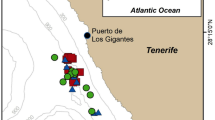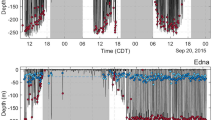Abstract
WHALES, when breathing, usually keep on the move ; the purpose of this letter is to explain why. All aquatic air-breathing creatures have to contend with the risk of water entering their lungs. Although the blow-holes of whales are valvular and situated on the highest part of the head, these animals, usually, can only breathe with safety when their blow-holes are at some height above the surface of the sea.
This is a preview of subscription content, access via your institution
Access options
Subscribe to this journal
Receive 51 print issues and online access
$199.00 per year
only $3.90 per issue
Buy this article
- Purchase on Springer Link
- Instant access to full article PDF
Prices may be subject to local taxes which are calculated during checkout
Similar content being viewed by others
References
"The Spouting and Movements of Whales", Annual Report of Smithsonian Institution, 1903.
"Journal of a Voyage", p. 287.
"Voyage of the Lady Franklin and Sophia", 2, 324 ; 1850–51.
"Arctic Regions", 1, 494.
Author information
Authors and Affiliations
Rights and permissions
About this article
Cite this article
GRAY, R. Breathing Movements of Whales. Nature 133, 797–798 (1934). https://doi.org/10.1038/133797b0
Issue Date:
DOI: https://doi.org/10.1038/133797b0
Comments
By submitting a comment you agree to abide by our Terms and Community Guidelines. If you find something abusive or that does not comply with our terms or guidelines please flag it as inappropriate.



